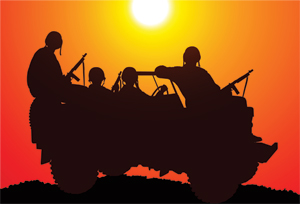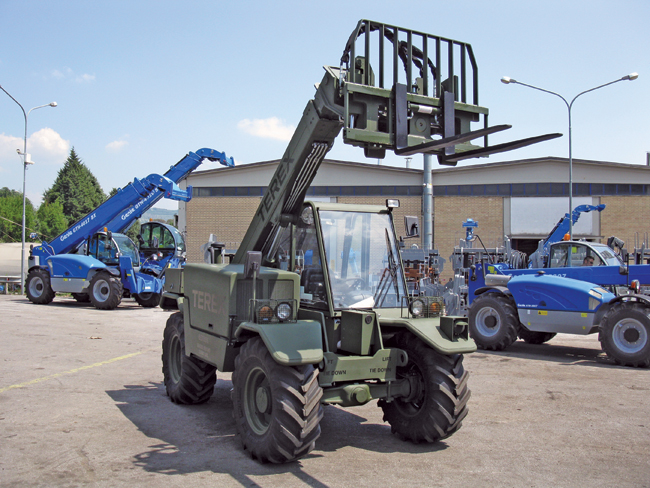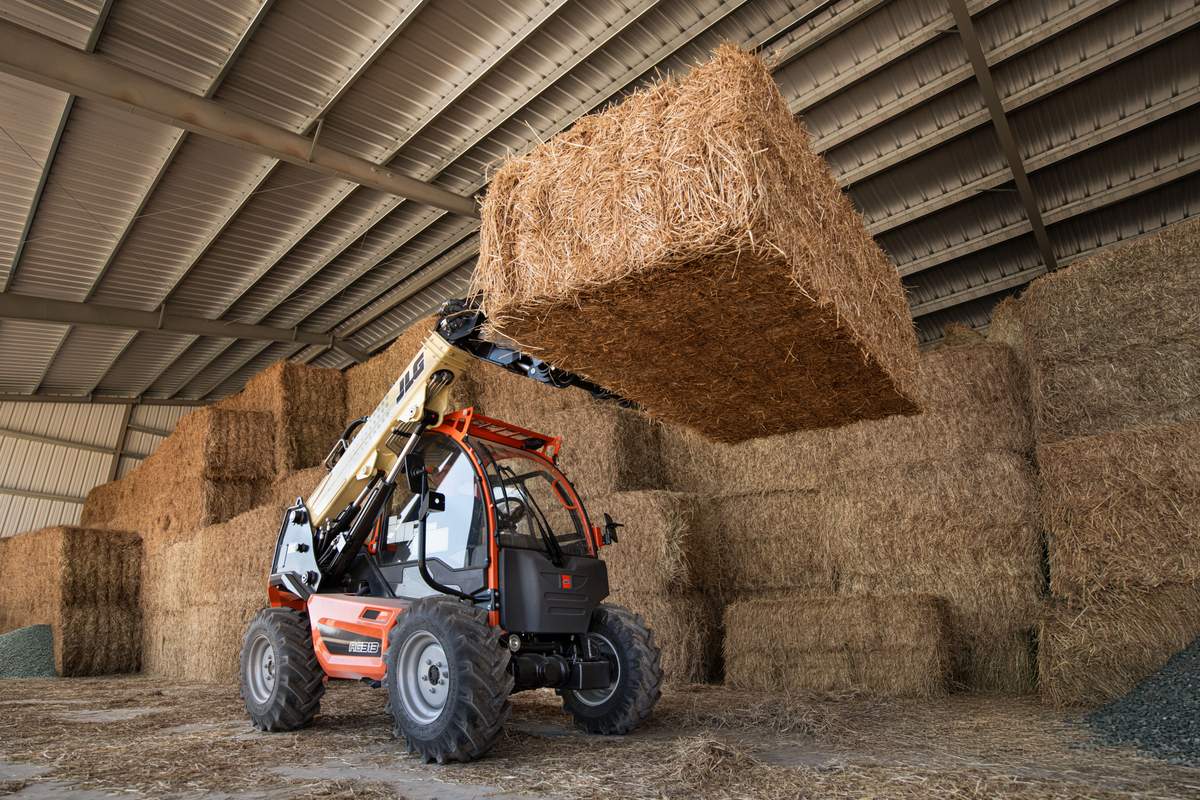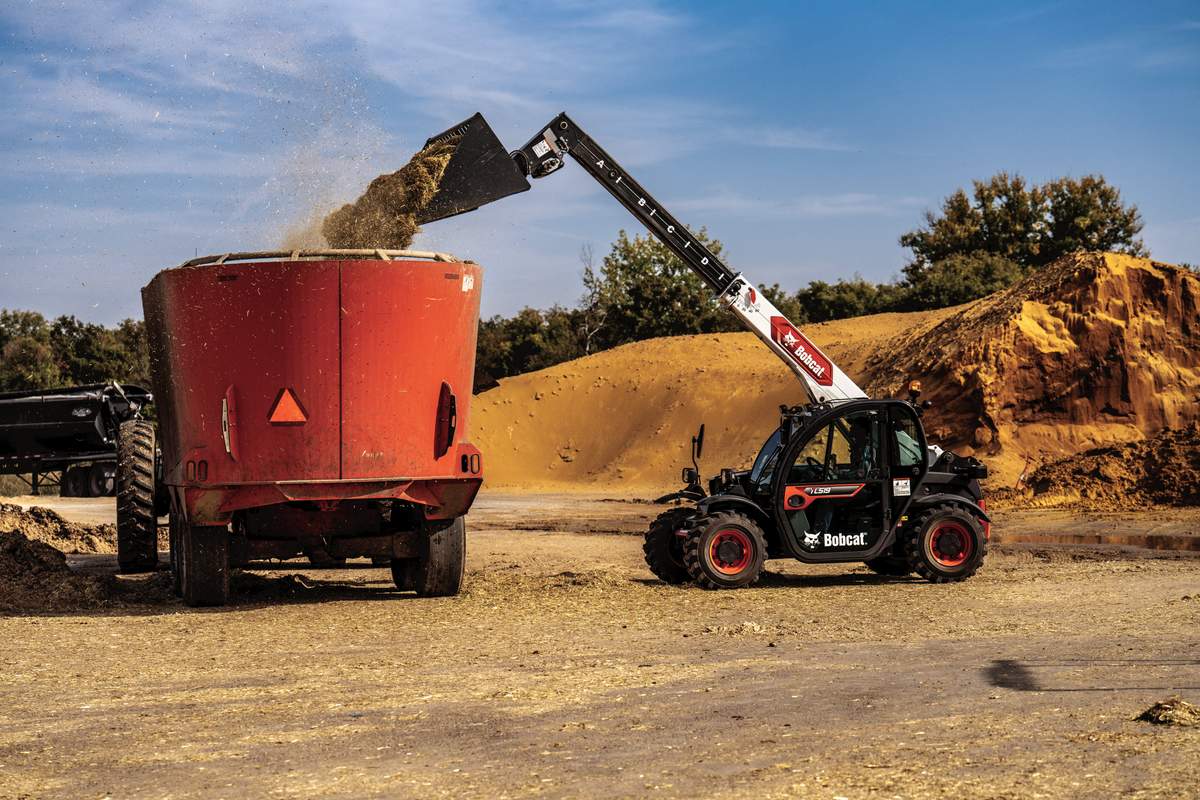Extreme Environments, Extreme Equipment
 The men and women of the United States armed forces travel from combat zone beaches to frozen arctic tundra to defend freedom and fight in the interest of democracy. Just as these individuals go above and beyond every day, so must their equipment. Tasked with everything from river fording to aircraft maintenance, the military relies on material handling and aerial access equipment. Often based on the commercial equipment found on everyday jobsites, military equipment is custom designed to assist the men and women of the Army, Marines, Navy and Air Force in completing the most demanding missions.
The men and women of the United States armed forces travel from combat zone beaches to frozen arctic tundra to defend freedom and fight in the interest of democracy. Just as these individuals go above and beyond every day, so must their equipment. Tasked with everything from river fording to aircraft maintenance, the military relies on material handling and aerial access equipment. Often based on the commercial equipment found on everyday jobsites, military equipment is custom designed to assist the men and women of the Army, Marines, Navy and Air Force in completing the most demanding missions.
The United States military is regarded as the most capable military force in the world. Rapid deployment and extreme mobility are vital to the strength of the armed forces. To move resources quickly and efficiently, they depend on the rugged versatility of militarized telehandlers.
“To complete their mission, the United States military demands equipment built to the highest standards and designed to perform in the most challenging scenarios,” said Dave Gillrie, general manager of global products with Terex Aerial Work Platforms (AWP). Known in the commercial industry for its Genie brand equipment, Terex has been producing militarized telehandlers for more than a decade.
The United States Marine Corps is often the first branch of the U.S. military to enter a conflict. Leading the way and moving by both sea and land, the Marines face a broad range of material handling challenges and have the greatest need for militarized telehandlers. The Marines are known for their ability to land on beaches and quickly gain ground amidst a conflict. Landing on unrefined beaches, militarized telehandlers must be able to operate partially submerged, drive across sand and navigate around obstacles.
As the first to a conflict, the Marines are also tasked with preparing defensive positions and temporary bases. Material handlers serve a key role in these tasks as they can lift and position not only supplies but also barriers. Working in fast paced and potentially dangerous situations, these units are designed with military grade armor to provide safety for those inside.
Military grade material handlers are not only needed by the Marines, but also by the Navy, Army and Air Force. With the global reach of these combined forces, telehandlers are prepared for any scenario. Special climatic chambers are used to test and help design units that can operate in extreme temperature environments ranging from the Arctic to the deserts of the Middle East. When designing equipment for the coldest places on the planet, the finest details become crucial. In extreme cold, everything from interior cabin temperature to the freezing point of hydraulic fluids must be taken into account. Equipment operators must be able to heat the cabin in a safe amount of time and maintain visibility out of windows in sub-zero wind chills. Freezing weather also affects the mechanical function of the equipment, which must be designed to compensate for contracting and expanding metals and malfunctioning batteries.
Telehandlers not only see sub-zero temperatures, but also work in the direct sunlight of the planet’s hottest deserts. In these settings, the temperature inside the operator cabin must remain cool enough to prevent heat stroke. These units must be equipped with air conditioning and shaded cabins to protect the soldiers inside.
“The military demands equipment built for specific applications and missions. These unique requirements are known as Mil Standards,” said Gillrie. “Terex focuses extensively on the engineering, research and design of its military equipment to achieve each Mil Standard.”
Intended for use in live combat zones, militarized telehandlers have many unique features, such as special anchor points for cabled helicopter transport. This allows telehandlers to be delivered and removed from any setting, even when direct ground access is not an option. These units are also designed to withstand the surge of an electromagnetic pulse which would likely electronically disable non-militarized commercial equipment.
Reaching from Sea to Sky
The United States Navy and Air Force span the globe, protecting American interests by both sea and sky. With the largest Navy and the most technologically sophisticated Air Force in the world, these forces demand the highest performing equipment. To accomplish their missions, the Navy and Air Force not only rely on material handlers, but also aerial access equipment. When speed and efficiency is vital, aerial access equipment such as scissor lifts and boom lifts offer the solution.
Servicing military airplanes requires access to all portions of an aircraft, from the belly of the plane to the top of the tail rudder. Scissor lifts and boom lifts are an ideal choice for these tasks. Just as material handlers must be custom built to meet military needs, so must access equipment.
When it comes to servicing an airplane, a scissor lift is quick and effective. Technicians can rapidly reach the bottom and sides of an aircraft to provide service and maintenance. The compact size and easy maneuverability of a scissor lift makes it suited for working in restricted spaces, such as the interior of an aircraft carrier. Booms offer the advantage of not only accessing the bottom and sides of an aircraft, but also the top. The ability to reach up and over is further enhanced with platform jibs. These additions to the boom section of the unit increase the working envelope and allow access to more areas in less time.
For every type of aircraft, from fighter jets to cargo planes, service is a constant necessity. Without the ability to quickly service this equipment, the rapid response of the Navy and Air Force would be hindered.
Unrestricted Access
Military grade equipment requires military grade service support. Just as Marine telehandlers are designed to ford rivers in combat zones, customer support must be able to face extreme conditions and service equipment no matter the location or situation. As a manufacturer of militarized equipment, Terex AWP offers modified service support to meet these needs. In the commercial market, Terex AWP offers the industry-leading Genie 360° customer support program. To serve the military, Genie 360° has expanded to accommodate their extreme needs. Technicians receive specialized training to work on highly modified equipment, and the parts distribution network is prepared to supply these technicians with the parts they need.
“Terex AWP recognizes that supporting the military goes beyond designing and manufacturing equipment, and includes providing the services necessary to keep equipment in the field and hard at work,” said Gillrie. “Through enhancements to the Genie 360° service and parts infrastructure, Terex AWP supports all business done worldwide with the Armed Forces.”

In some situations, traditional service technicians cannot access areas where military equipment is located due to safety regulations and military restrictions. To overcome this, Genie 360° was modified for military customers to offer field service representatives that are certified to work in restricted areas and work during operational contingencies. This puts equipment technicians in the field with military forces, helping get equipment back to work and keep missions on track.
From building bases in the Middle East to repairing planes out at sea, U.S. armed forces are at the controls of militarized equipment. Just as material handling and aerial access equipment is a part of life in the United States, so it is for the U.S. military all around the world.
Sean Larin is a marketing coordinator with Terex Aerial Work Platforms, based in Redmond, Wash.



